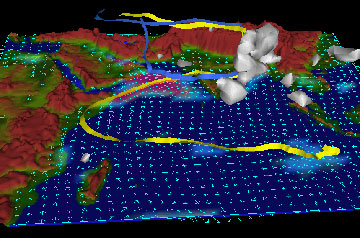Monsoon pattern linked to climate change
mongabay.com
May 31, 2007
Researchers have constructed a 155,000 record of monsoon history. The findings could help climatologists better understand the impact of climate change on monsoon patterns, which play a critical role in agriculture for hundreds of millions of people.
Analyzing fossil plankton shells from the Gulf of Guinea in equatorial West Africa, scientists at the University of California, Santa Barbara, and at Kiel University in Germany showed that “the strength of ancient monsoons is directly tied to two factors: the Northern Hemisphere’s climate shifts due to the expansion and contraction of the European and North American continental ice sheets, and the amount of local solar radiation hitting the African region,” according to a news release from the University of California – Santa Barbara (UCSB).
“This is the first study to definitively tie together the influence of these two factors over several climate cycles,” said UCSB paleoclimatologist David Lea, an author of the paper, which is published in the June 1 issue of the journal Science. “Insights from the study of ancient climate cycles will lead to more confident predictions of how monsoon patterns will evolve in a future warmed by greenhouse gases.”

Indian monsoon, water vapor tracers; Source: NASA Data Assimilation Office